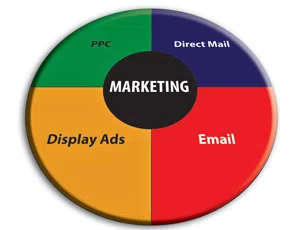Err on the side of cautiion when sending customers email
The use of electronic marketing has increased dramatically for most small businesses, including HVAC contracting firms. Many HVAC businesses are spending more time and money marketing to existing customers. Contractors who used to mail post card reminders to their clients are now collecting email addresses and sending seasonal service reminders electronically. There is also an increased use of appointment reminders sent electronically the week or day before a service call is about to occur. Sometimes emails ask for feedback. If one of your email communications is coupled with an advertisement, are you doing so legally?
The CAN-SPAM Act of 2003
In 2003, the federal government passed a law known as the CAN-SPAM Act.* This law was necessary because unsolicited commercial electronic mail – or spam, as it is commonly referred to – comprised half of all electronic mail traffic. The intent was to reduce the amount of unsolicited commercial electronic mail traffic to ensure the convenience and efficiency of electronic mail.
The CAN-SPAM Act applies to the sending of electronic messages to both personal computers and to mobile devices. Violations of this law can result in monetary penalties of $250 for each violating commercial electronic mail message sent, with a cap of $2,000,000; the payment of the recipient’s attorney’s fees; and, if the violation is deemed willful, the possible tripling of the damages.
Okay, so what is a “commercial electronic mail message?” It is any electronic mail message, the primary purpose of which is the commercial advertisement or promotion of a commercial product or service. Stated otherwise: it is a message that is trying to get you to buy certain goods or services.
The obvious subsequent question is: who determines what the primary purpose of the message was? The Act states that it is up to the recipient of the message to determine a reasonable interpretation of the subject line and the body of the message. So, the party tasked with making the determination, or decision, as to the primary purpose of the message is the person receiving it and NOT the person or business sending it. This is an important distinction because most laws are interpreted by using the reasonable person standard. The fictional reasonable person standard does not take into account the thoughts or beliefs of the recipient of the message, but, in general, what the pertinent community of people would think if they were the recipients of the message.
Exceptions to The Act
With most laws there are exceptions, and these exceptions are if the commercial electronic mail message is a transactional or relationship message. The Act identifies the following categories of messages as transactional or relationship messages:
- When facilitating, completing or confirming a transaction
- Providing warranty, recall, safety or security information
- Periodically updating a consumer regarding the terms of a continuing relationship
- Providing information regarding employment status or benefits
- To deliver goods, services or updates the consumer is entitled to receive under the terms of an item previously purchased
If a determination has been made that the message to be sent out falls within the category of a commercial electronic mail message, then The Act requires that all of the following information be included in the message:
- An accurate from line
- Accurate header information
- An accurate subject field
- The recipient’s ability to reply to the message
- The recipient’s ability to opt out from receiving future messages
- A physical postal address or post office box number
Since the recipient now has the ability to opt out from receiving future commercial electronic mail messages, the sender of the message has to provide this opt out option to recipients and also track and update such preferences. The three possibilities are: 1) that a recipient has not opted in or opted out as to receiving commercial electronic mail messages from you or your business; 2) the recipient has specifically opted in; or 3) the recipient has specifically opted out.
If the recipient has not provided any preference, or has opted in, then the sender of the commercial electronic mail message must include in the message the information called out in the bullet points noted previously. If the recipient has opted out from receiving any future commercial electronic mail messages from the sender, the sender then has ten days from the date the notice is received to update its records and cease the sending of commercial electronic mail messages to that recipient. Even if the recipient originally opted in, the sender must provide that recipient with the chance to opt out in every commercial electronic mail message sent.
The Act treats commercial messages to mobile devices differently.
Where the sender is able to send an unsolicited commercial electronic mail message to a recipient as long as the information contained in the bullet points noted previously is contained in the message, a sender is prohibited from sending an unsolicited commercial message to a mobile device without the express prior consent of the recipient.
When is an Email Message Not Commercial?
While this discussion has addressed the definition of a commercial electronic mail message and the exceptions to the same, what has not been discussed is when is a message not a commercial electronic mail message. Is a message that asks the recipient to rate his/her customer service experience a commercial electronic mail message? This author cannot answer that question for you as, in accordance with The Act, the answer rests with the recipient of the message. This is why I advise my clients to err on the side of caution and include the information set forth in the bullet points noted previously when sending out any electronic message that could, even erroneously, be interpreted by the recipient as a commercial electronic mail message.
This article is not providing legal advice or creating an attorney-client relationship. If you have any questions, or would like to learn more about this topic, contact the author.
*The “SPAM” in CAN-SPAM does not refer to electronic “spam.” The acronym CAN-SPAM is derived from the bill’s full name: Controlling the Assault of Non-Solicited Pornography And Marketing Act of 2003.



